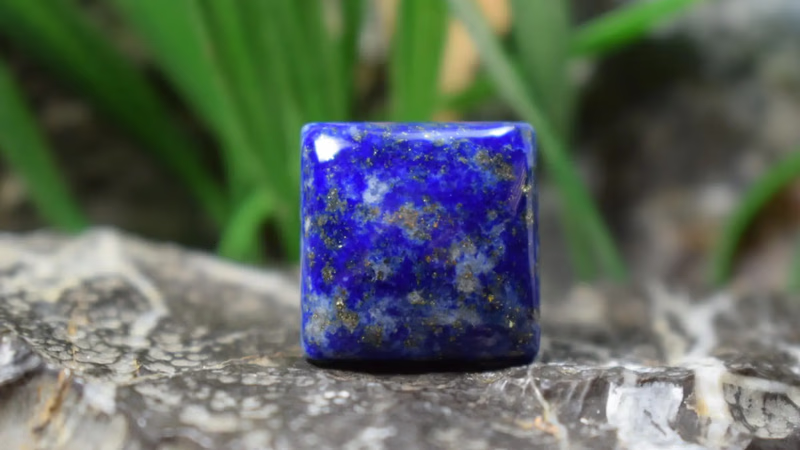
Authentic Lapis lazuli features unique patterns and deep blue hues.
Distinguishing between genuine Lapis lazuli and synthetic or fake Lapis lazuli can be challenging, but there are several methods you can use to help determine their authenticity. Remember that some treatments, such as dyeing or enhancing the color of Lapis lazuli, can also affect its appearance. Therefore, it is essential to rely on a combination of factors and seek expert advice for a definitive identification of Lapis lazuli's authenticity. If you are uncertain about the authenticity of a Lapis lazuli stone, it is advisable to seek the opinion of a qualified gemologist or consult a reputable gemstone laboratory for certification. They can perform tests and provide a professional analysis to determine if the stone is genuine or synthetic.
Natural Lapis lazuli is a relatively rare gemstone and is generally more expensive compared to synthetic alternatives. If you come across Lapis lazuli that is significantly cheaper than market prices or appears to be readily available in large quantities, it may be an indication that it is synthetic. Natural Lapis lazuli typically displays a deep blue color with varying shades of blue, often with golden or white calcite streaks and specks of pyrite. The color should be rich and vibrant. Synthetic Lapis lazuli may have a more uniform and artificial-looking color. Be wary of stones that have an unnaturally intense or perfect blue color.
Artificial and plastic stones heat up with a little touch. Wet a cotton ball with acetone and hit the rock surface. This material dissolves the artificial color in itself. Check the color difference in the cracks of its surface with the magnifying loop. As a destructive test for azure reconstructed with plastic material, the hot tip of the metal rod gives off an unpleasant plastic odor. These specimens also sink by pressing under the tooth. Be careful when buying azure that has a uniform color without streaks or spots and is very colorful and looks like artificial colors. With the Chelsea Filter Gemological Tool, you can distinguish original azure from synthetic and laboratory. Under Chelsea Filter (Chelsea filter), Natural lapis lazuli reflects a faint reddish-brown light, while a synthetic lapis lacquer reflects bright red light.
When there is too much white in the rock, it is classified in the cheap calcite class. When the color of the stone you want is dark blue-gray, it is probably not lapis lazuli and it is sodalite. They usually paint low-quality sodalities and sell them as azure! Many imitation lapis lazuli is found in Taiwan. Artificial azure specimens made of golden mottled glass are not visible but are less common in Gilson synthetic specimens. Physically, natural azure rough has a light blue sand color on the glazed porcelain surface. If it's not too pleasant smell half of sulfur smell. Obtained a guarantee from the seller that in case of a negative answer, the gemology laboratory will take it back.
Natural Lapis lazuli often contains natural inclusions, such as pyrite and calcite, which can create unique patterns and variations within the stone. Look for irregular patterns and variations in color and texture, as these are often indicative of natural Lapis lazuli. Synthetic stones may have a more consistent appearance without these natural variations. Natural Lapis lazuli is a relatively dense stone. If you have access to a gemological scale, you can measure the weight of the stone and compare it to the expected weight of Lapis lazuli. Synthetic stones may have a lighter weight or feel less substantial in comparison.
-
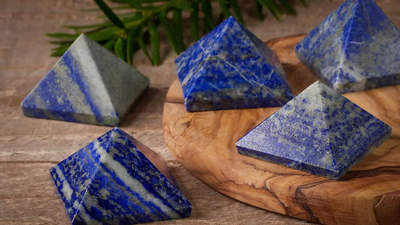
Lapis lazuli is a significant stone in chakra therapy, particularly for the throat chakra, which governs communication and self-expression. It enhances verbal and written communication skills, promotes clarity, and helps overcome shyness and public speaking fears. When used in meditation or energy healing, placing Lapis lazuli near the throat chakra is believed to clear blockages and balance energy. The stone also harmonizes masculine and feminine energies, supporting overall well-being and spiritual growth. Additionally, Lapis lazuli aids in accessing inner wisdom and enhances intuitive awareness. Historically valued by ancient Egyptians, it symbolizes truthfulness and integrity, encouraging authenticity in one"s actions. The stone promotes emotional healing by calming the mind and alleviating anxiety while facilitating deep relaxation. It is also linked to the third eye chakra, enhancing intuition and spiritual vision.
Furthermore, Lapis lazuli assists individuals in understanding their true selves, releasing repressed emotions, and providing spiritual protection against negative energies. Overall, it serves as a powerful tool for self-discovery and connection to higher realms. "
-

Identifying genuine Lapis lazuli from synthetic alternatives requires careful examination of various characteristics. Natural Lapis lazuli is typically deep blue with unique variations, including golden or white calcite streaks and specks of pyrite. In contrast, synthetic stones often exhibit a uniform, overly vibrant color that lacks the natural imperfections found in authentic specimens. Price can also be a telltale sign; if a Lapis lazuli stone is significantly cheaper than market value or available in large quantities, it may be synthetic. Techniques for verification include using a Chelsea Filter, which reveals different light reflections between natural and synthetic stones. Additionally, physical tests such as checking for an unpleasant odor when heated or observing color differences in cracks can help distinguish authenticity. Natural stones usually contain inclusions and irregular patterns, while synthetics tend to have a consistent appearance. For definitive identification, consulting with a qualified gemologist or reputable laboratory is recommended to ensure the authenticity of the stone.
-

Lapis lazuli"s value is primarily determined by its color, with the most sought-after stones showcasing a deep, vivid blue hue. Inclusions of minerals like pyrite and calcite can enhance the stone"s beauty, but excessive inclusions may detract from its clarity. The size and shape of Lapis lazuli vary based on their intended use, with larger stones favored for statement pieces and smaller ones for intricate designs. A high-quality polish is essential for maximizing visual appeal, as it enhances the stone"s color and shine. The origin of the stone also plays a significant role in its quality; Afghan Lapis lazuli is historically esteemed for its rich blue color and high pyrite content, while stones from Chile and Russia offer unique characteristics. Authenticity is crucial when purchasing Lapis lazuli, as synthetic alternatives exist. Buyers should seek reputable sources to ensure they acquire genuine stones without treatments that alter their natural appearance. While not rare, high-quality Lapis lazuli with exceptional features can be scarce, making them valuable to collectors.
Ultimately, the best type of Lapis lazuli depends on personal preferences regarding color intensity and inclusion patterns. "
-
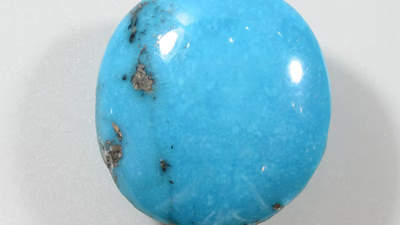
Synthetic Lapis lazuli, or synthetic Azure, is a man-made alternative to natural Lapis lazuli gemstones. Created in laboratories, it mimics the appearance of natural stones using various minerals and binding agents. Commonly, powdered minerals like lazurite and pyrite are combined with resins to produce synthetic stones. While these synthetic versions are more affordable and widely available, they lack the authenticity and inherent value of natural Lapis lazuli. Buyers should be cautious and knowledgeable about distinguishing between the two types when purchasing. Natural Lapis lazuli is a metamorphic rock valued for its unique color and historical significance, often used in jewelry and art. In contrast, synthetic stones may fade over time depending on the quality of materials used in their production. Various other stones can be confused with natural azure due to similar appearances, including sodalite and azurite.
The market also features different names for synthetic products that can mislead consumers. Understanding these differences is crucial for making informed purchasing decisions.
-
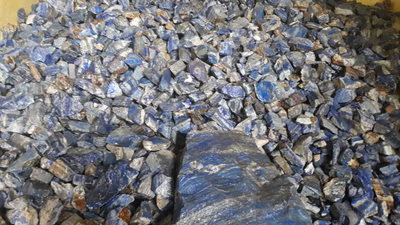
Lapis lazuli, or azure, is a semi-precious gemstone renowned for its vibrant blue hue and historical significance. Composed mainly of lazurite, calcite, and pyrite, its color can range from light to dark shades, often featuring golden flecks or white streaks. Historically sourced from Afghanistan"s Sar-e-Sang mines, it is also found in Russia, Chile, Canada, and the U. S. Lapis lazuli has a moderate hardness of 5 to 6 on the Mohs scale, making it suitable for jewelry and decorative items. Its cultural importance spans thousands of years; ancient civilizations like the Egyptians and Greeks valued it for its protective properties and associations with wisdom and enlightenment. The stone is used in various forms including beads, pendants, sculptures, and as a pigment for ultramarine in art. Lapis lazuli"s unique characteristics include its opaque nature and glassy to waxy luster.
It has been utilized not only for aesthetic purposes but also in dyeing fabrics and pottery. The gemstone"s rich history reflects its enduring appeal across cultures. "
-

Lapis lazuli, a highly valued gemstone, has been mined for thousands of years in West Asia, particularly in Afghanistan and Iran. The geological conditions in this region are ideal for the formation of Lapis lazuli deposits, which are primarily found in metamorphic rocks. The Sar-e-Sang mine in Afghanistan is one of the oldest and most renowned sources, with a history dating back over 6,000 years. Other notable sources include the Andean region of Chile and Lake Baikal in Russia. The craftsmanship and mining traditions passed down through generations have established West Asia as a leading producer of high-quality Lapis lazuli. Despite the abundance of resources, demand often exceeds supply, leading to the use of synthetic alternatives. The cultural significance of Lapis lazuli is profound; it has been utilized in jewelry and religious artifacts throughout history. As global interest continues to rise, maintaining these mines is crucial for sustaining both local economies and international trade.
-

Lapis lazuli has been revered since ancient times for its medicinal and magical properties. In ancient Egypt, it was ground into powder for use in ointments and cosmetics, believed to cure eye ailments and protect against evil spirits. Greek physician Dioscorides noted its cooling effects and therapeutic benefits for fevers, inflammation, and skin diseases. Historical texts from scholars like Ibn Sina highlight its medicinal uses, including treatment for digestive issues and as an antidote for poison. Lapis lazuli was also recognized in Traditional Chinese Medicine (TCM) for its benefits to the liver, spleen, and respiratory system, promoting mental clarity and spiritual well-being. Its applications extended to Islamic medicine where it was used to treat fevers and enhance cognitive functions. Despite the lack of archaeological evidence regarding its trade specifically for medical purposes, ancient writings provide substantial insights into the healing properties attributed to this azure stone.
-
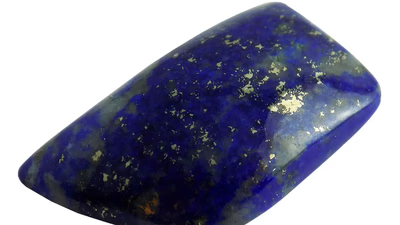
Lapis lazuli, a blue stone with historical significance, has been referenced in ancient texts, including the Epic of Gilgamesh and Islamic literature. In ancient Mesopotamia and Egypt, it symbolized power and divinity, often used in jewelry and art. Although not explicitly mentioned in the Qur"an, it is associated with Paradise in Islamic tradition. The stone"s vibrant azure color has adorned Islamic art and architecture, representing spiritual realms. Historical accounts by travelers like Ibn Battuta highlight its use in decorative arts across various regions. Lapis lazuli was traded along significant routes such as the Silk Road, connecting civilizations from Afghanistan to the Mediterranean. Its metaphysical properties are recognized in Islamic traditions, believed to promote mental clarity and protection against negativity. The trade of Lapis lazuli not only reflects its economic value but also its cultural importance across different societies.








